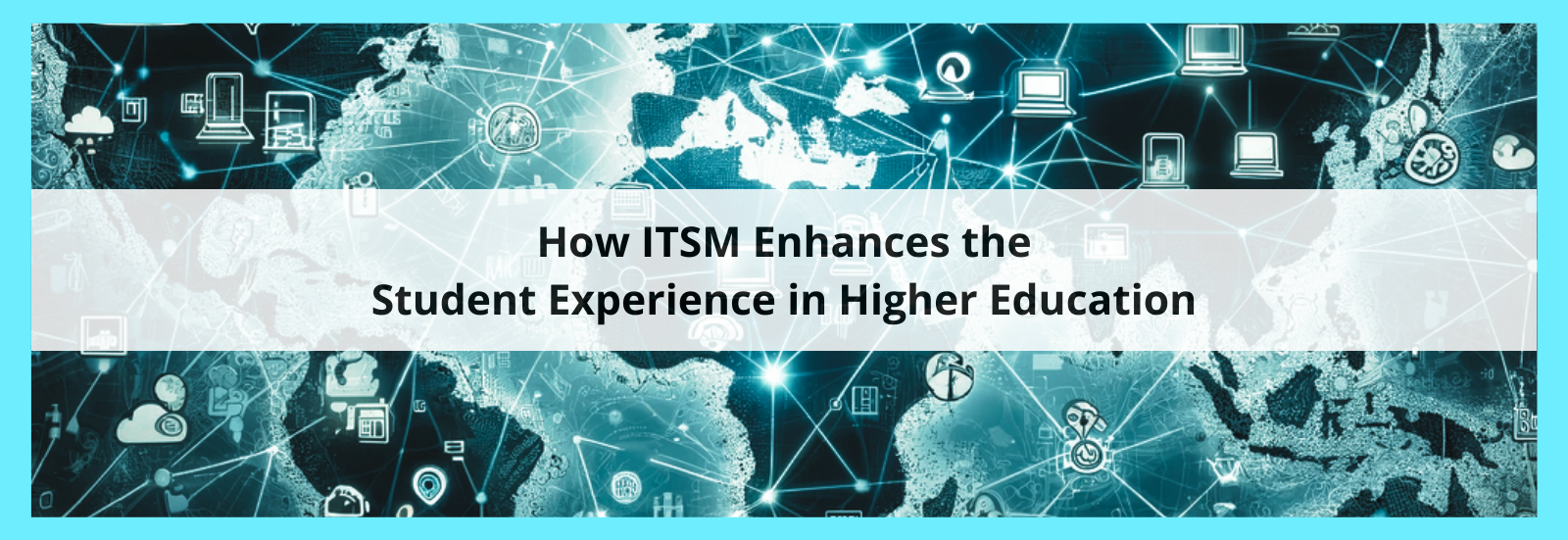In today’s digital age, the role of Information Technology Service Management (ITSM) in shaping the student’s experience in higher education is increasingly pivotal. ITSM’s integration into the educational ecosystem not only streamlines operations but also significantly enriches the learning and teaching environment.
ITSM: A Catalyst for Accessible and Enhanced Learning
The advent of cloud-based services and advanced IT tools, under the umbrella of ITSM, has transformed the way educational resources are accessed and utilized. Cloud computing allows for the storage and retrieval of academic materials from any location, breaking down geographical barriers and enabling a flexible learning environment. This is particularly crucial for institutions with many international students or those offering distance learning programs.
Moreover, Learning Management Systems (LMS) such as Canvas and Blackboard play a critical role in this digital landscape. Managed via ITSM principles, these platforms offer organized, user-friendly spaces for course materials, assignments, and feedback, thereby facilitating a more structured and interactive learning experience.
The Direct Impact of ITSM on Student Satisfaction and Learning Outcomes
Efficient ITSM directly influences the quality of learning outcomes and the level of student satisfaction. By ensuring the reliability and up-to-date nature of IT resources, ITSM minimizes disruptions due to technical issues. This reliability is crucial for creating a stable learning environment where students can concentrate on their studies without worrying about technical failures.
Moreover, ITSM practices that prioritize the user experience, such as offering round-the-clock technical support and intuitive user interfaces, play a significant role in boosting student satisfaction. A positive interaction with IT services often translates into higher engagement levels, which can subsequently lead to better academic results.
Student-Centered ITSM Initiatives: Case Studies and Successes
Educational institutions are increasingly implementing student-centered ITSM initiatives. For instance, a top-ranked American university uses Kivuto Cloud to efficiently streamline access to and distribution of needed software to their students. Similarly, the University of Pretoria has employed AI-powered service desks and automation to ensure consistent support, even during crises, highlighting the power of ITSM in creating responsive and student-friendly IT environments.
ITSM’s Role in Supporting Faculty
For faculty, ITSM provides many solutions that aid in research, teaching, and administrative duties. It facilitates access to high-performance computing and data storage solutions essential for research. In teaching, ITSM assists in integrating digital learning environments, such as LMS, for content distribution and student progress tracking. On the administrative front, ITSM contributes to the efficiency of processes like student data management and resource allocation, thereby reducing the administrative load on faculty.
Addressing Challenges and Solutions in ITSM Implementation
While ITSM offers numerous benefits, implementing it in education comes with challenges such as managing decentralized, complex user bases and ensuring security amidst constant threats. ITSM provides tools to address these issues, like centralized services for streamlined operations and enhanced data security measures. These tools help institutions manage large user bases and complex technology inventories more efficiently. Learn how Kivuto Cloud can help you improve your ITSM.
ITSM and the Evolving Student Experience
The concept of the digital student experience is in constant evolution. With the diversity in students’ digital skills, it is critical for institutions not to overestimate their digital competencies. Effective digital student experiences should focus on active engagement rather than just content delivery. This involves providing adequate digital skills training and ensuring accessible and inclusive technology-enhanced learning from the start.
ITSM and the Future of Higher Education
ITSM is not just about managing current technology needs but also about preparing for future challenges and opportunities. By offering a platform for growth and change, ITSM positions educational institutions to effectively support major strategic initiatives like digital transformation. This transformation encompasses not only the adoption of innovative technologies but also a cultural shift towards a more digital-centric educational model.
Beyond IT: The Broader Applications of ITSM
The principles of ITSM can be applied beyond the IT department, for example in enterprise service management (ESM). This involves standardizing and packaging business or educational processes into services, applying service management principles to improve efficiency and effectiveness across various departments.
Conclusion
ITSM plays a critical role in enhancing the student experience in higher education, impacting everything from accessibility of resources to faculty support and institutional efficiency. As higher education continues to evolve in this digital era, the strategic implementation of ITSM will be key in ensuring a positive, productive, and future-ready educational environment.










